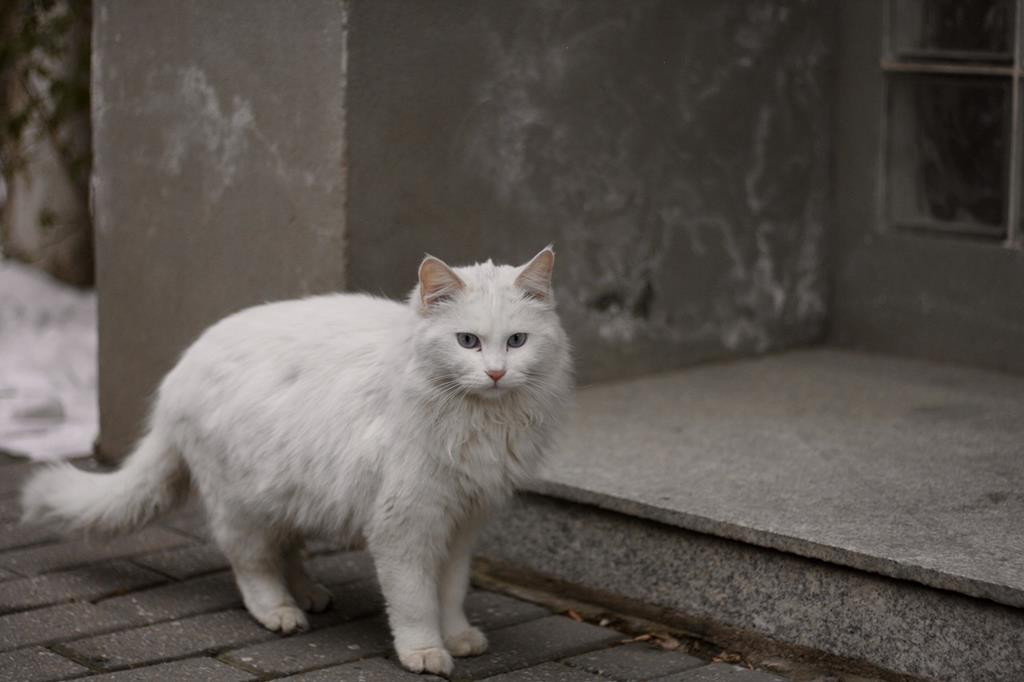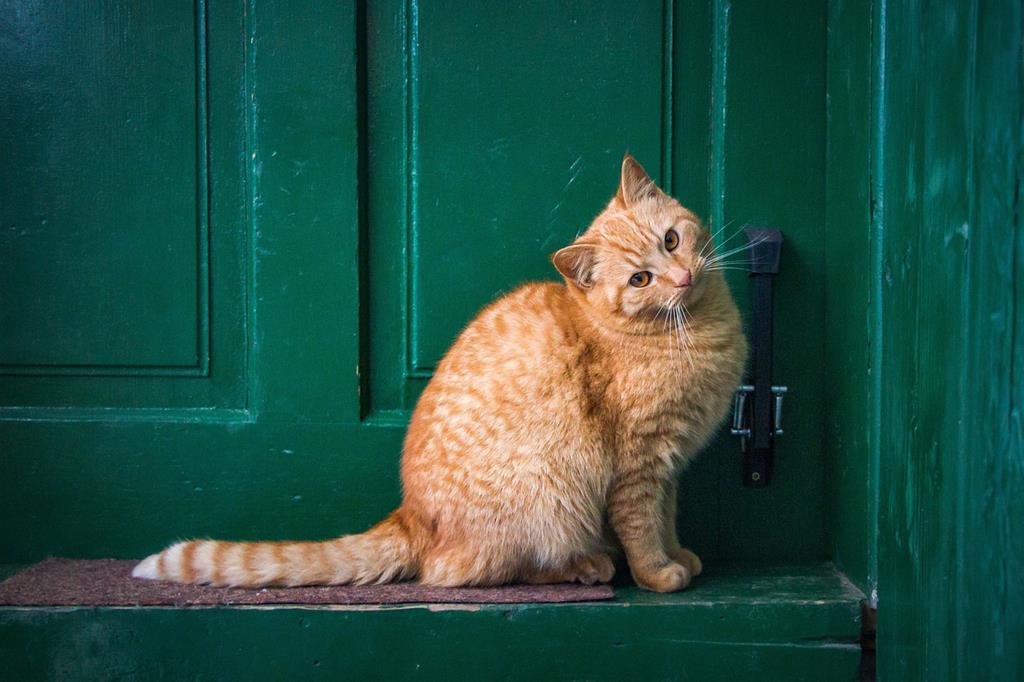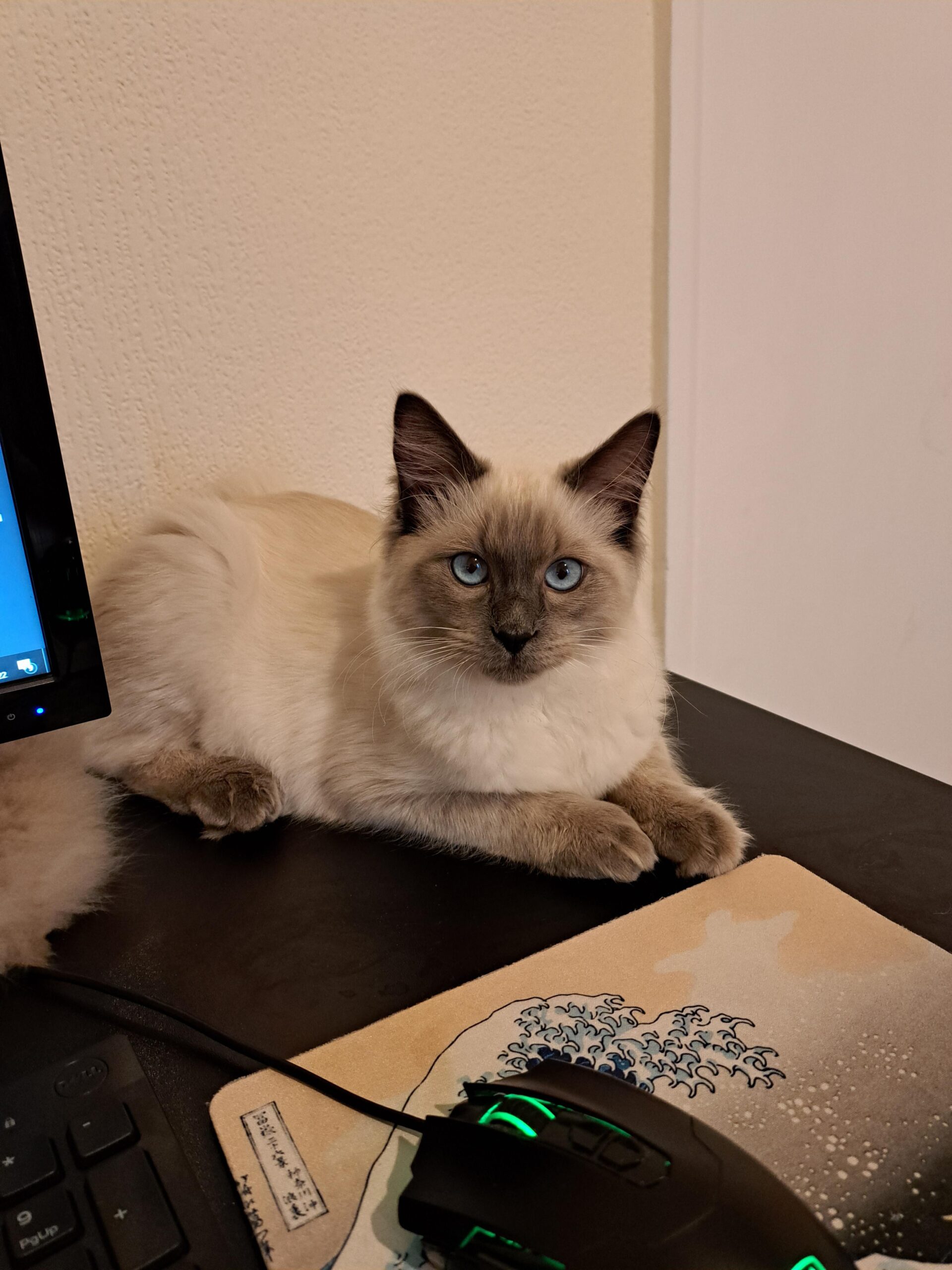Cats, with their enigmatic personalities and distinctive physical features, have been captivating human hearts for centuries. Among their many unique attributes, the tail is a fascinating appendage that plays a crucial role in their communication, balance, and expression. One common question among cat enthusiasts is whether a cat’s tail undergoes changes, specifically if it gets thinner as they age. In this article, we will delve into the intricacies of feline anatomy, behavior, and aging to explore the truth behind the myth of thinning cat tails.
The Anatomy of a Cat’s Tail:
Before delving into the potential changes in a cat’s tail with age, it is essential to understand the basic anatomy of this vital appendage. A cat’s tail consists of vertebrae, muscles, ligaments, and tendons. The number of vertebrae in a cat’s tail can vary but typically ranges between 18 and 23. These vertebrae are connected by joints and surrounded by muscles, allowing for a wide range of movements.
Cat tails are not uniform; they can be long, short, straight, or curved, depending on the breed and individual characteristics. The tail serves various functions, such as aiding in balance, expressing emotions, and communicating with other cats and even their human companions. Understanding this foundation is crucial in assessing whether a cat’s tail changes as they age.
Myth or Reality: Do Cat Tails Thin with Age?
“Yes, cat tails can thin with age. As cats grow older, their tails may lose some of their thickness and fullness, becoming leaner. This natural aging process is generally gradual and can vary among individual cats. Regular veterinary check-ups can help monitor a cat’s overall health, including any changes in their tail structure over time.”

Contrary to the common belief that a cat’s tail becomes thinner as they age, there is no scientific evidence to support this claim. The structure of a cat’s tail remains relatively constant throughout its life. The thickness of a cat’s tail is primarily determined by genetics, breed, and individual variation.
However, there are instances where a cat’s tail might appear thinner due to external factors. Weight loss, illness, or injury can affect a cat’s overall body condition, potentially leading to a perceived thinning of the tail. Additionally, changes in fur density and muscle mass can influence the appearance of a cat’s tail. It is crucial to differentiate between natural variations and changes caused by underlying health issues.
Aging and Its Effects on Cat Tails:
As cats age, several changes can occur in various aspects of their health and behavior, and their tails are no exception. Here are some general observations about aging and its potential effects on cat tails:
-
Reduced Flexibility:
- Just like other parts of the body, the tail may experience a reduction in flexibility as cats age. This can be due to changes in muscle tone and joint mobility.
-
Thinning of Fur:
- Older cats may experience thinning or changes in the texture of their fur, including the fur on their tails. This is a common part of the aging process.
-
Decreased Activity Level:
- Older cats may become less active, and this can also be reflected in their tail movements. A less active cat may not move its tail as vigorously or frequently as a younger, more playful cat.
-
Arthritis and Joint Issues:
- Cats, like humans, can develop arthritis as they age. Arthritic changes may affect the tail’s movement, making it less flexible or causing discomfort.
-
Changes in Tail Position:
- Cats use their tails for communication, balance, and expressing emotions. Aging cats may display changes in the position of their tails. For example, a cat might carry its tail lower or higher than it did when it was younger.
-
Reduced Reflexes:
- Aging can lead to a decline in reflexes and coordination. This may impact a cat’s ability to control its tail movements with the same precision it had in its younger years.
-
Behavioral Changes:
- Cats may become more sedentary or less social as they age, and this can be reflected in their tail behavior. They may not engage in as much tail flicking, wrapping, or other interactive behaviors.
-
Potential Health Issues:
- Some age-related health issues, such as nerve degeneration or cognitive decline, may indirectly affect a cat’s tail function.
It’s important to note that individual cats may age differently, and not all cats will experience the same changes in their tails as they get older. Regular veterinary check-ups can help monitor your cat’s overall health, including any age-related changes in behavior and physical condition. If you notice any significant or sudden changes in your cat’s tail or behavior, it’s advisable to consult with a veterinarian for a proper assessment and guidance.
Maintaining Tail Health in Senior Cats:

To ensure the well-being of a senior cat, it is essential to monitor their overall health, including their tail. Regular veterinary check-ups, a balanced diet, and appropriate exercise can contribute to a cat’s overall vitality. Engaging in interactive play with your cat can help maintain muscle tone and flexibility, preventing age-related issues that may affect their tail indirectly.
To promote tail health in senior cats:
-
Balanced Nutrition:
- Ensure that your senior cat receives a well-balanced and age-appropriate diet that meets its nutritional requirements. Consult with your veterinarian to determine the best feeding plan for your cat’s specific needs.
-
Regular Exercise:
- Encourage gentle play and exercise to maintain muscle tone and joint flexibility. Tail-chasing toys or interactive play sessions can be enjoyable and beneficial for your senior cat.
-
Dental Care:
- Dental issues can contribute to weight loss and discomfort during eating. Regular dental check-ups and dental care can help address potential problems that may affect your cat’s overall health.
-
Comfortable Environment:
- Provide a comfortable and accessible environment for your senior cat. Ensure that sleeping areas are cozy, and consider ramps or steps to help them reach elevated spaces with ease.
-
Veterinary Monitoring:
- Schedule regular veterinary check-ups to monitor your cat’s overall health, including its tail. Any unusual changes or concerns should be discussed with your veterinarian promptly.
Why is my cats tail not fluffy anymore
A cat’s tail can lose its fluffiness for various reasons, and it’s essential to consider factors such as age, health, grooming, and environmental conditions. Here are some potential reasons why your cat’s tail may not be as fluffy as before:
- Normal Aging:
- As cats age, their fur texture and density can change. It’s not uncommon for older cats to experience thinning or less fluffy fur, and this can affect their tails as well.
- Grooming Habits:
- Cats are meticulous groomers, and if your cat excessively grooms its tail, it may result in reduced fluffiness. Over-grooming can sometimes be a sign of stress, skin irritation, or underlying health issues.
- Underlying Health Issues:
- Various health conditions, such as skin infections, allergies, hormonal imbalances, or parasites, can affect the condition of a cat’s fur, including the tail. If you notice other signs of illness, like changes in appetite, behavior, or litter box habits, it’s crucial to consult with a veterinarian.
- Poor Nutrition:
- A lack of essential nutrients in your cat’s diet can impact the health of its coat, leading to dullness or changes in texture. Ensure that your cat is receiving a well-balanced and nutritious diet appropriate for its age and health status.
- Environmental Factors:
- Environmental conditions, such as excessive humidity or dry air, can influence the quality of a cat’s coat. Maintaining a comfortable and suitable environment for your cat can help preserve the health of its fur.
- Genetics:
- Some cat breeds naturally have less fluffy tails than others. If your cat is a specific breed known for a sleeker or less fluffy coat, this could be a genetic trait rather than a cause for concern.
- Stress or Anxiety:
- Stressful situations or changes in the cat’s environment can lead to changes in grooming habits. Cats may over-groom or show signs of anxiety, which can affect the appearance of their fur, including the tail.
If you’re concerned about the changes in your cat’s tail, especially if there are accompanying signs of illness or discomfort, it’s advisable to consult with a veterinarian. They can perform a thorough examination, conduct any necessary tests, and provide guidance on potential causes and appropriate treatments to address the issue.
Why is my cat going bald by her tail

If you notice that your cat is losing fur around her tail, it’s essential to consider potential underlying causes. There are several reasons why a cat may experience hair loss or balding around the tail area:
- Flea Allergy Dermatitis:
- Fleas are a common cause of skin irritation in cats. If your cat is allergic to flea saliva, even a small number of flea bites can trigger excessive itching and scratching, leading to hair loss. Check for signs of fleas or flea dirt (tiny black specks) on your cat’s fur.
- Ringworm:
- Ringworm is a fungal infection that can cause hair loss, redness, and itching. The affected area may appear circular and can be found anywhere on the body, including around the tail. Ringworm is contagious, so prompt veterinary attention is necessary.
- Allergies:
- Cats can develop allergies to certain foods, environmental factors, or substances they come into contact with. Allergic reactions can manifest as itching, redness, and hair loss, often around the tail or other sensitive areas.
- Mites or Parasites:
- Ear mites, mange mites, or other parasitic infestations can lead to hair loss in cats. Mites may cause intense itching, prompting the cat to scratch and bite at the affected area.
- Infections or Dermatitis:
- Bacterial or fungal infections, as well as other forms of dermatitis, can result in hair loss. Infections may be secondary to other underlying issues or may occur due to trauma, bites, or scratches.
- Over-grooming:
- Cats may over-groom due to stress, anxiety, or discomfort. Excessive licking and biting at the tail can lead to hair loss. Identifying and addressing the underlying cause of stress is crucial in such cases.
- Hormonal Imbalances:
- Hormonal issues, such as hyperthyroidism or hormonal imbalances related to the endocrine system, can affect a cat’s coat and lead to hair loss.
- Trauma or Injury:
- Physical trauma or injury to the tail area, such as a bite wound or accidental injury, can result in hair loss. In some cases, this may be accompanied by swelling or inflammation.
If you notice balding around your cat’s tail, it’s strongly recommended to seek veterinary attention promptly. A veterinarian can conduct a thorough examination, perform diagnostic tests if needed, and determine the underlying cause of the hair loss. Treatment will depend on the specific diagnosis, and addressing the issue early can help prevent further complications.
Home treatment for cat hair loss
While it’s important to consult with a veterinarian to identify and address the underlying cause of your cat’s hair loss, there are some general home care measures you can take to support your cat’s skin and coat health. Keep in mind that these suggestions are not a substitute for professional veterinary advice, especially if your cat’s hair loss is severe or persistent. Here are some home care tips:
- Regular Grooming:
- Gently brush your cat’s coat to remove loose fur and distribute natural oils. This can help prevent matting and improve overall coat health. However, be cautious if your cat has sensitive or irritated skin.
- Flea Control:
- If fleas are suspected or confirmed, use veterinarian-recommended flea control products to eliminate the infestation. Regularly clean your cat’s bedding and the living environment to prevent reinfestation.
- Nutrition:
- Ensure your cat is on a balanced and nutritious diet. Quality cat food with essential nutrients, including omega-3 and omega-6 fatty acids, can contribute to a healthy coat. Consult your veterinarian for dietary recommendations.
- Hygiene:
- Keep your cat’s living environment clean. Regularly clean the litter box, provide fresh water, and maintain a clean and safe space for your cat.
- Avoid Irritants:
- Identify and eliminate potential irritants in your cat’s environment. This may include changing cleaning products, avoiding exposure to certain plants or substances, or addressing potential allergens.
- Provide Stress Relief:
- Reduce stressors in your cat’s environment. Provide a safe and comfortable space, ensure there are hiding spots, and use pheromone diffusers to create a calming atmosphere.
- Topical Treatments:
- If recommended by your veterinarian, you may use vet-approved topical treatments to soothe irritated skin. However, it’s crucial to follow your veterinarian’s guidance and avoid using over-the-counter products without professional advice.
- Warm Compress:
- For localized areas of irritation or inflammation, a warm compress may help soothe the skin. Use a clean cloth soaked in warm water (not hot) and gently apply it to the affected area.
Always consult with your veterinarian before implementing any home treatments. They can provide specific guidance based on the underlying cause of the hair loss and your cat’s individual health needs. If the hair loss is severe, rapidly progressing, or associated with other concerning symptoms, seek veterinary attention promptly for a comprehensive evaluation and diagnosis.
Conclusion:
In conclusion, the belief that a cat’s tail gets thinner with age is a myth without scientific basis. A cat’s tail structure remains relatively consistent throughout its life, with variations influenced by genetics and individual characteristics. While age-related changes in a cat’s overall health may indirectly affect the tail’s appearance, it is crucial to approach this topic with a holistic understanding of feline anatomy and aging. By providing proper care, attention, and veterinary support, cat owners can ensure their feline companions lead happy and healthy lives, tails and all.



